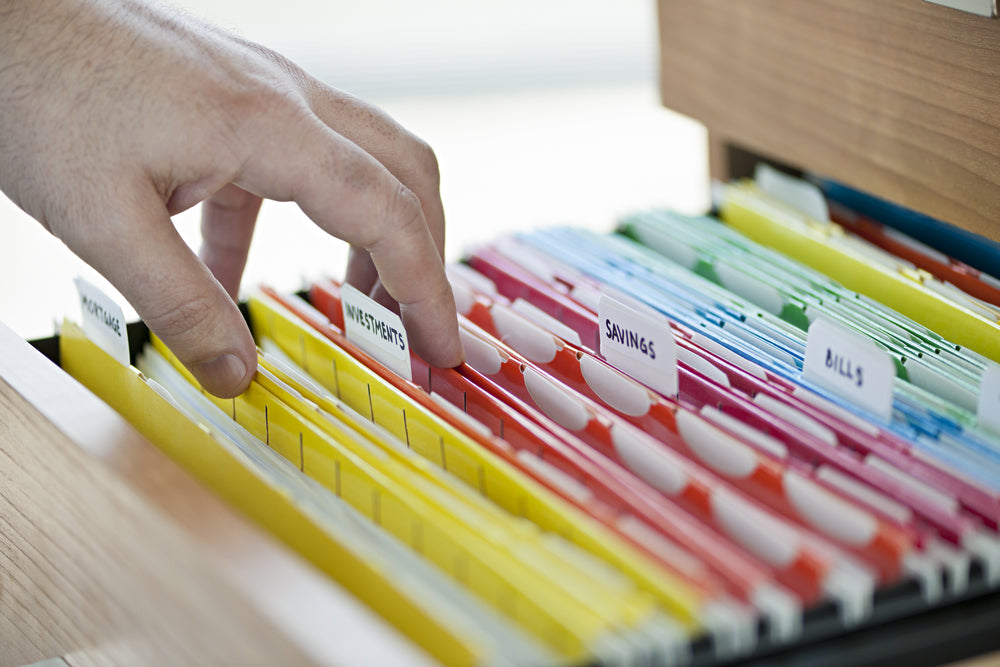For many offices, particularly those where lots of paper and other physical items are stored, file cabinet space is one of the most important considerations at play. Not only do you need to ensure there's enough space within cabinets themselves to store all your required items, you also need to ensure that these cabinets are not taking up unreasonable amounts of space within the office setup itself.
At Urban 9-5, we offer a wide variety of storage options among our industrial office furniture catalog, including mobile cabinets and several other forms of file cabinet. Not only this, but we also offer expertise to all our clients on how to organize file cabinets in cohesive ways to ensure that your space does not become overcrowded. Today's article will focus on some basic tips for organizing the interior of your file cabinets, both for keeping files accessible and for limiting the space that's taken up.
Color Coding
One of the simplest and most effective file cabinet storage themes involves the use of color coding. This pattern is extremely easy to implement, and can be used with any number of file cabinets.
Color coding involves colored file folder tabs based on the type of information that's commonly included within them, and then storing of those files in order of that sort. For example, if you have a "blue" section for financial documents, you might put all blue folders for business expenses in the left-most column, and then move onto "red" (financial documents for other areas) in the next column.
This pattern is perfect for offices with high filing volume, as it relies on single file cabinet rather than multiple cabinets. It also allows you to easily sort through files when you need to, and ensures that your cabinets are all using space effectively.
Adding Labels
Either on its own or in coordination with color-coding, labeling all files in simple, easy-to-read spots is also a great way to ensure that you never lose track of your files. This approach is also excellent for helping you figure out where additional cabinets may need to be placed within the office, so you're making sure to utilize space effectively.
Label where each file belongs from top to bottom (or left to right), and include information such as the department, the type of file (expense report, company policy document), and the year it was created. This allows you to quickly identify where each file goes without having to sort through them all individually, saving both time and space.
Purge Regularly
While some files will need to be retained for years, others can be disposed of after a certain period -- and doing this regularly is vital for keeping the file organization system running well. While there is some debate over what should be kept on hand long-term and what can be disposed of, in general most office files are good for up to five years, at which point they can either be recycled or disposed of.
You should be scheduling time where this is done throughout the year. Some offices will schedule a monthly file cleanup. Others may schedule it every other month. This practice allows you to keep up with what files are still needed and which ones can go.
Similarly, you should also be regularly reviewing the number of file folders that are currently being stored in the cabinets. If this reaches a point where it's difficult for new papers to fit or an excessive number of folders are continuing to accumulate, it may be time to buy a new cabinet.
Shredding
One vital tip that ties into our last section: When files are being disposed of, they should be shredded. This is vital for the security of your office; it's never a good idea to simply throw out important documents, and in some cases even throwing away files that contain personal information like social security numbers can be an issue.
Shredding not only ensures that certain pieces of personnel or financial information don't fall into the wrong hands, but also allows them to be recycled if necessary -- there's no sense in throwing these papers out in the trash, as that goes against the goals of minimizing space and reducing waste.
Filing Immediately
It's vital to the organization of your entire cabinet system that new files be added immediately when they come into the office. This is especially true if you're using color coding or tagging in any way; failing to add files immediately can lead to errors that throw the entire system off.
New files should be added at the end of each row and then moved forward so you fill in all available spaces. For example, if you have a yellow file folder for client communications, you'd want to add new files to the back of the yellow row, then move forward with each new 'yellow' file that comes in. This allows you to keep up with new files and ensures they get sorted effectively.
Put Someone in Charge
Especially for larger offices where lots of files are handled on a regular basis, putting one or two people in charge of the file cabinet system may be beneficial for keeping things running smoothly. This can ensure all files are being correctly filed, help spot any errors before they become major problems, and make it easier to keep up with the records of each department individually.
For more on ensuring proper storage within file cabinets, or to learn about any of our industrial or rustic office furniture options, speak to the staff at Urban 9-5 today.
